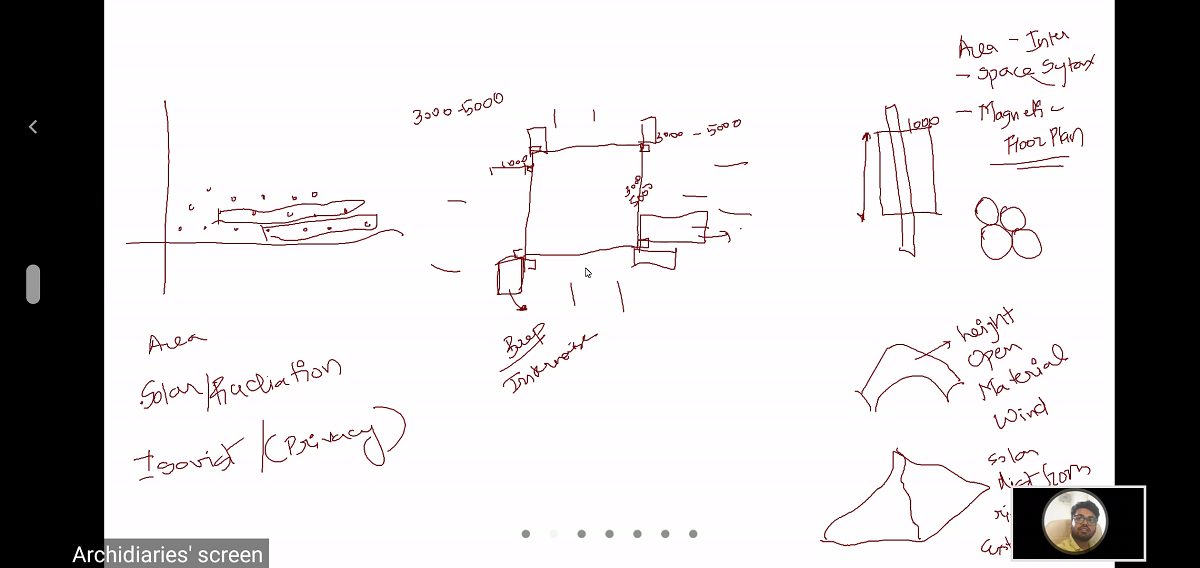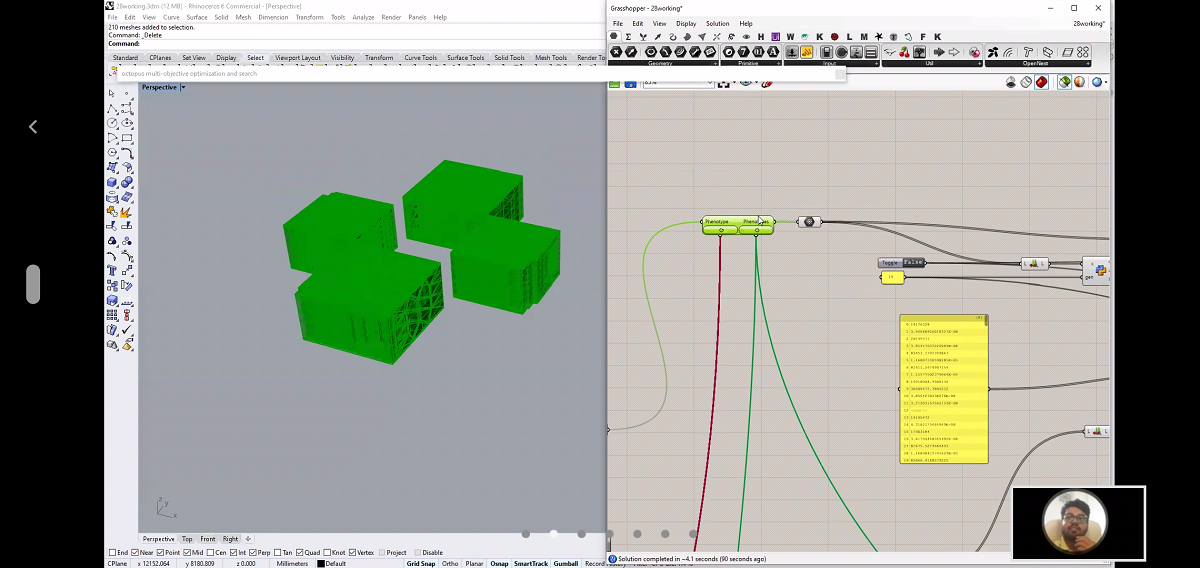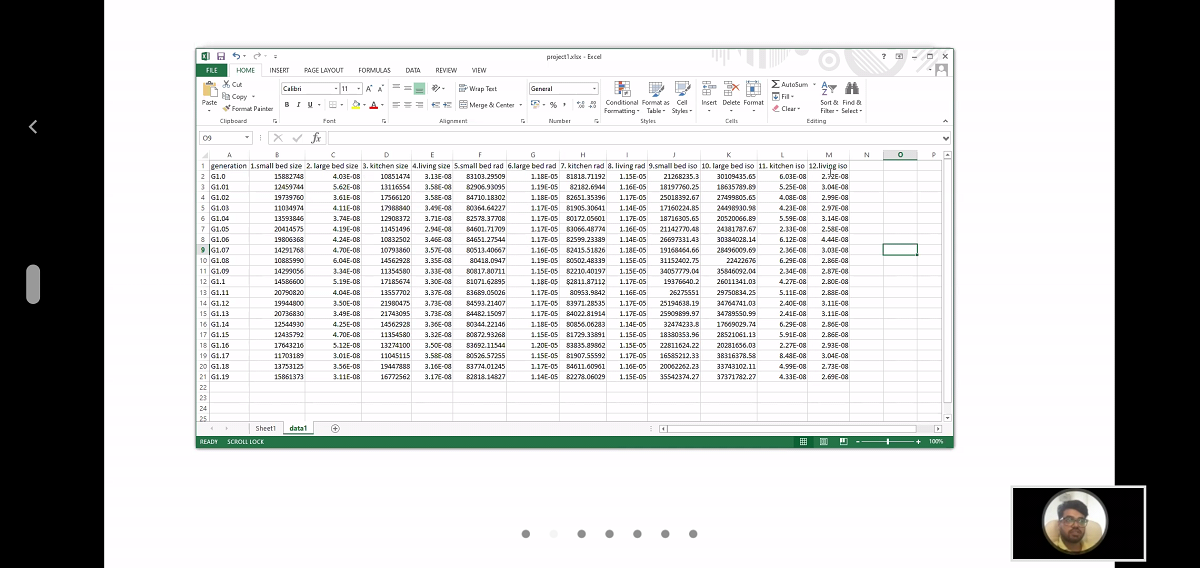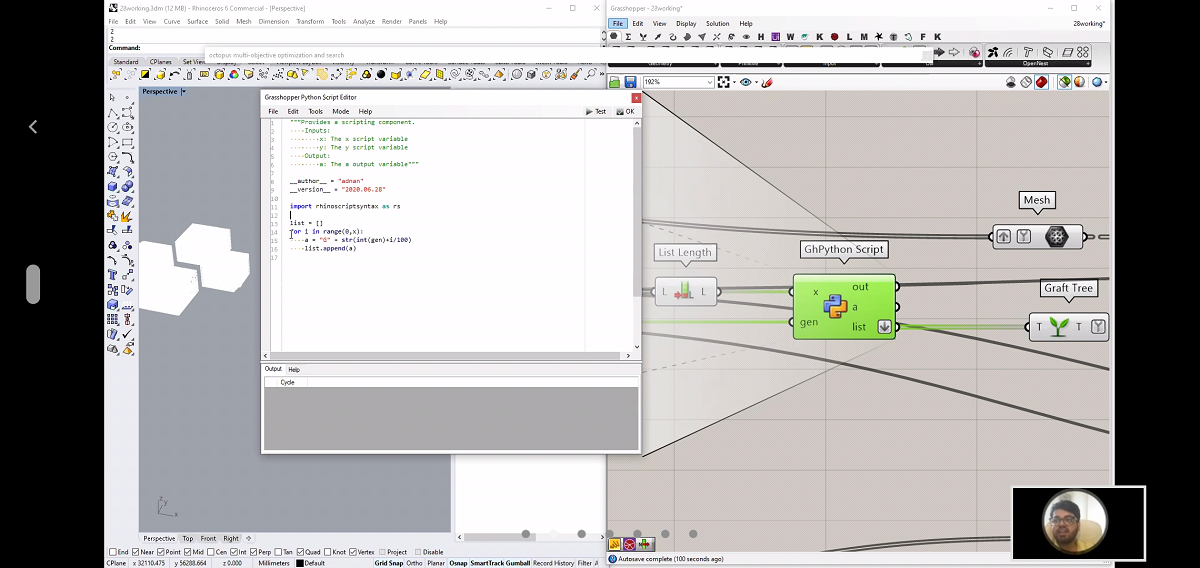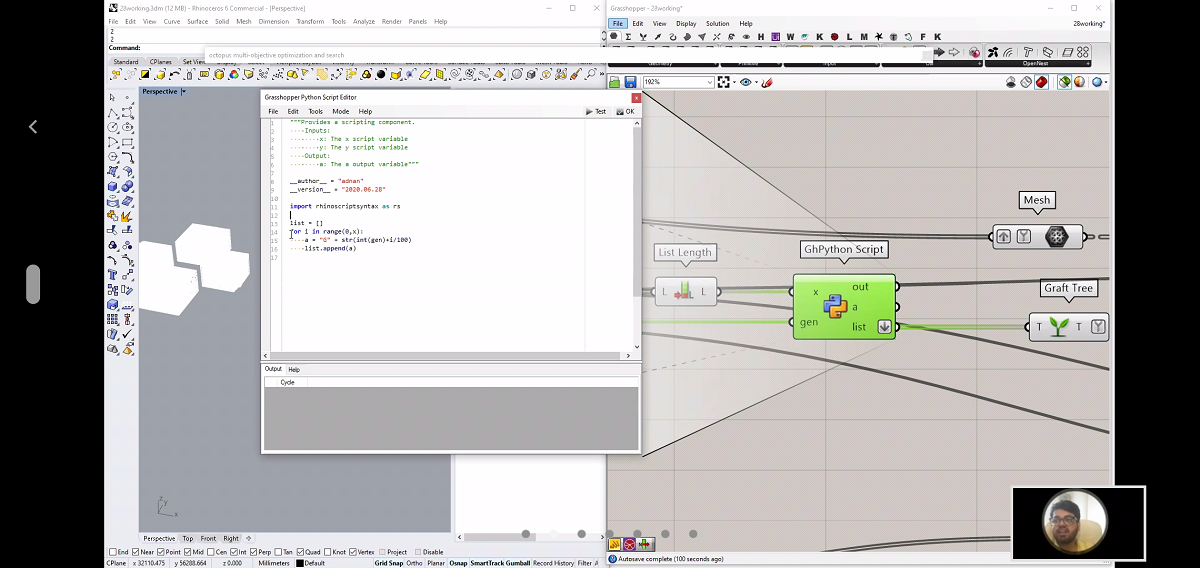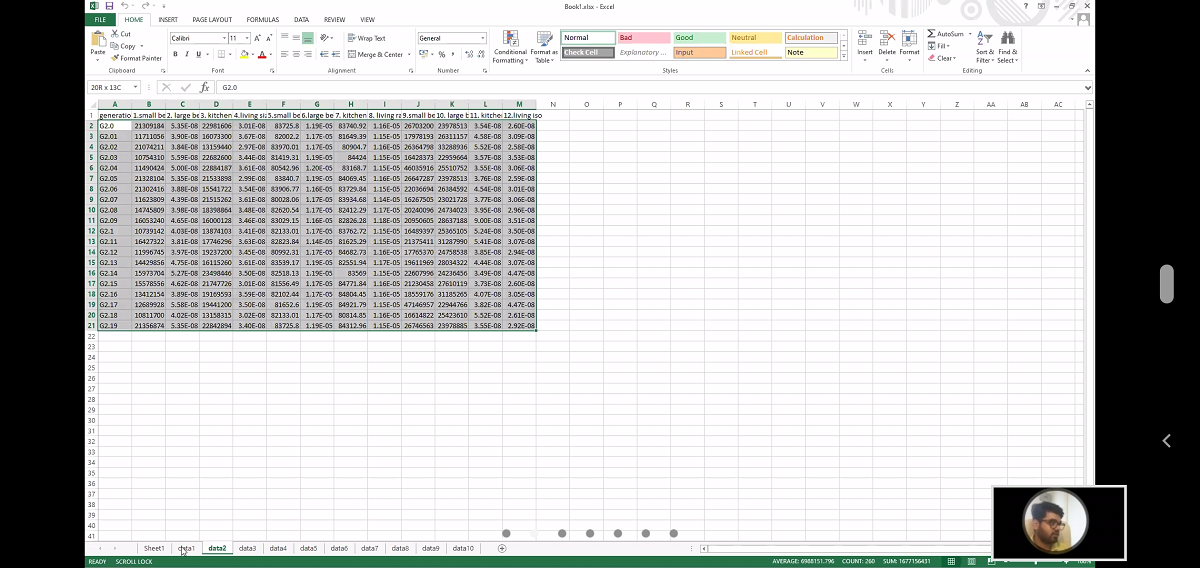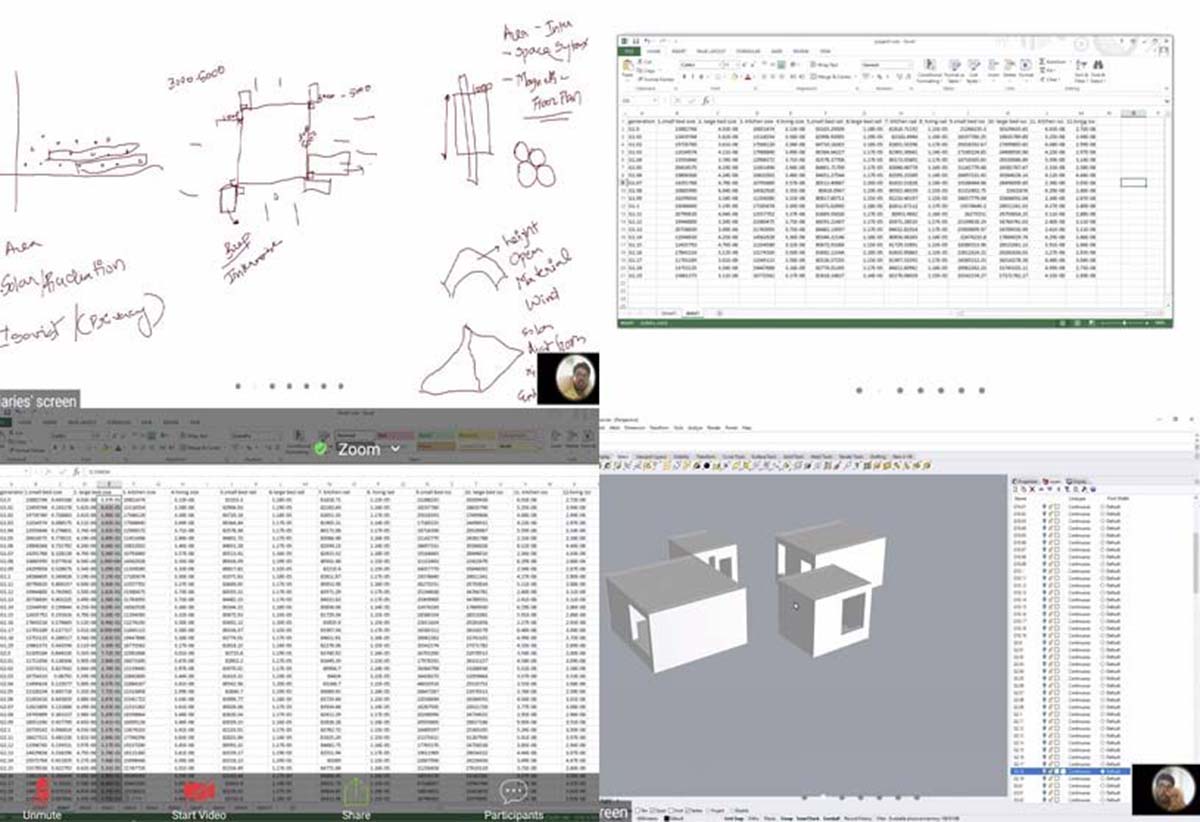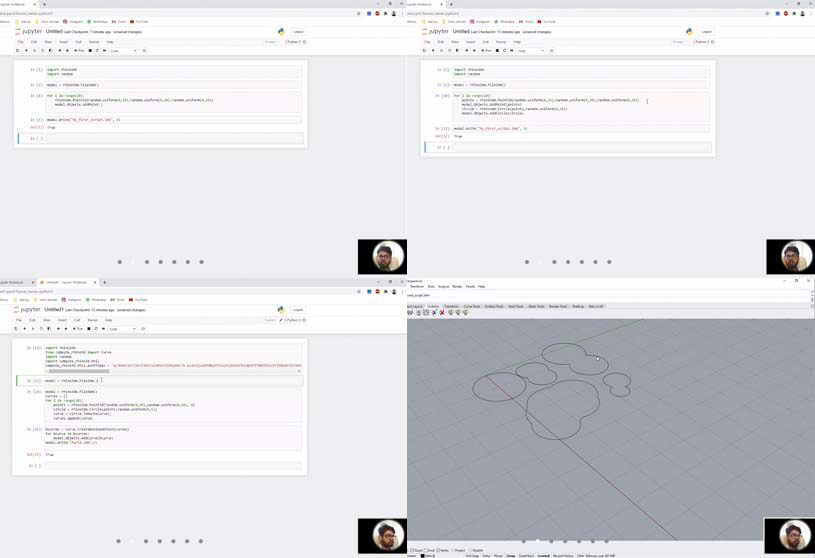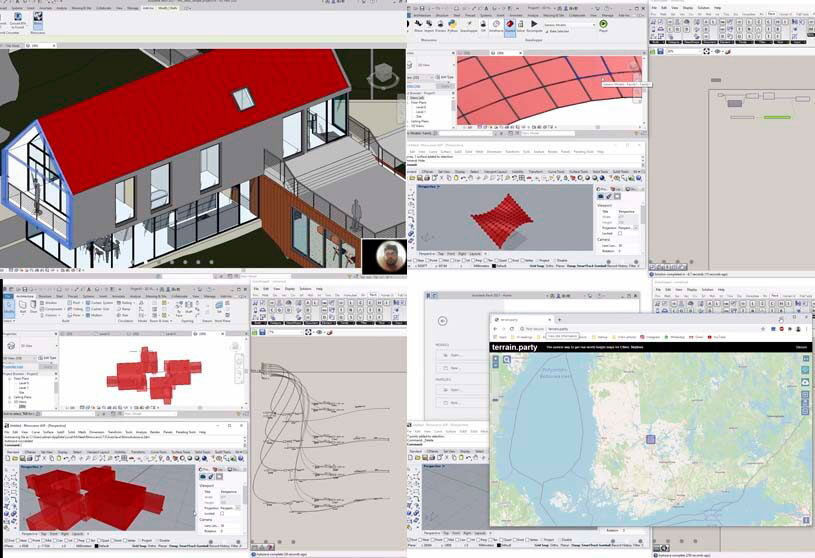Date: 28.06.2020
Task 1
Software used: Rhinoceros 6, Grasshopper, Ladybug, Python, MS Excel, Octopus
Tools Used: Construct Domain, Random, Panel, Loft, Extrude, Vector XYZ, Move, Explode, List item, ScaleNU, Brep, Partition List, Tree Statistics, Replace Path, Explode Tree, Jitter, Volume, IsoVist, Polyline, Solid Difference, Radiation Analysis, Mesh, Mesh Join, Brep Join, GenCumulativeSkyMix,SelectSkyMix, Analysis Period,Laddybug_download EPW WeatherFile, Rotate, Boolean Toggle, Expression, Integer, Octopus,
The session continued the same project. In this session the data of the criteria such as View, Solar Radiation and finding the Area for all the rooms was done. For this the data collected was of generation1 and generation2 mutation in Octopus. The exercise was to learn the fundamentals of Evolutionary algorithms that generate data using Octopus.
